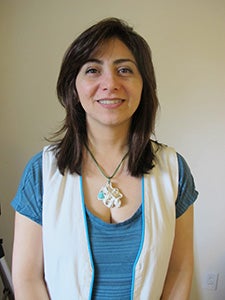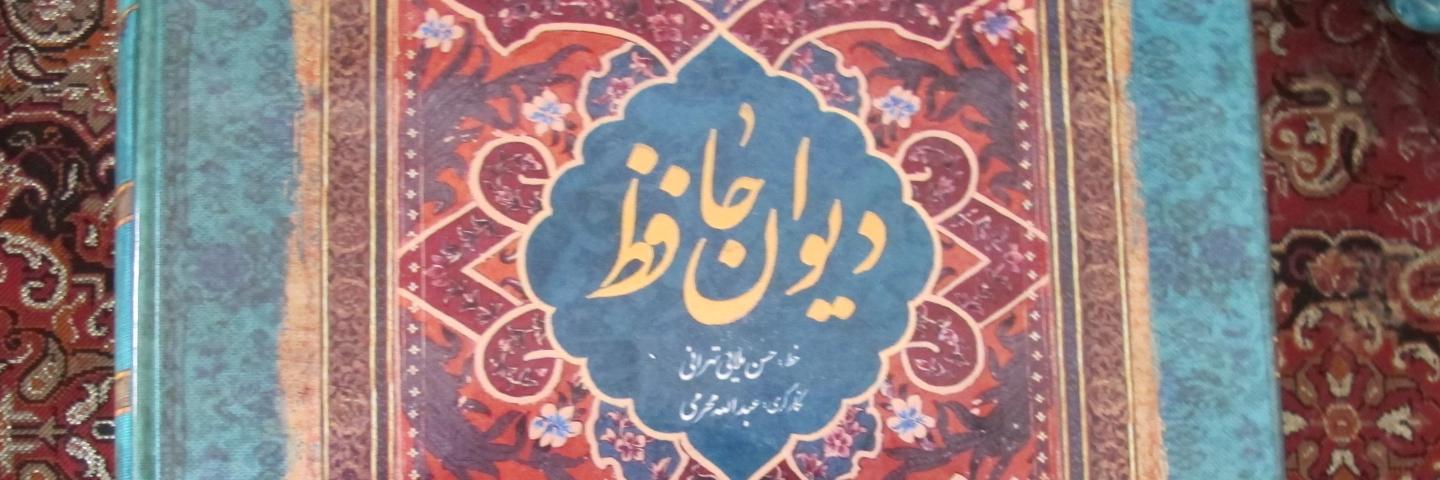 | Traditional skill/art/craft: Tazhib Years Awarded: 2016 Contact Information: Phone: (503)887-7589 Email: anvarimarjan@gmail.com Website: https://www.anvaristudio.com/ |
ARTIST BIOGRAPHY
Marjan Anvari is a professional artist with over 20 years of conservation and visual art experience. Her involvement with restoring ancient manuscripts and repairing the beautiful Persian illumination (Tazhib) inspired her to create her own interpretations of this beautiful art form. She learned Tazhib from the finest traditional masters and has endeavored to re-establish the form’s place in daily life by integrating it on functional items. In 2015 she started working with Negareh Art Group as a lead artist and has had several exhibitions since then. Her paintings are often interwoven with the traditional motifs of Tazhib.
APPRENTICE BIOGRAPHY - Niki Monsef 2016
Niki Monsef is of Persian descent born here in America, she is deeply connected to her Iranian heritage through traditional art. Despite growing up seeing some of the Persian art around her, it wasn’t until her second visit to Iran when she was older that she was able to truly see the art and its connection to her culture and how it touches the lives of her people in so many ways, this is what inspired her to begin learning Tazhib. It is through this learning of Tazhib that she feels she will have a better understanding of Persian art and culture. Tazhib is a traditional Persian art form that paints traditional designs onto fabric, it is her goal to blend Tazhib with Western art and technology.
Q+A WITH THE MENTOR ARTIST
Describe your traditional art.
Body
Tazhib means to cover something with gold and has traditionally adorned the margins of holy books and epic poems, as well as being an art form in its own right. Tazhib along with calligraphy and miniature constitute the foundation of Iranian arts. These symmetric patterns can be seen in Iran's architecture, handcrafts, rugs, silverwares, and manuscripts and is the most familiar art among lranians. Tazhib in Iran dates back to Sassanid era (224-651 A.D.) After the advent of Islam, it was used by Islamic and Arab governments and was turned into an Islamic art.
I am a visual artist and art conservator from Iran. I have more than 15 years of experience working on manuscripts, books and art on paper. I finished my education in Restoration and Conservation of Relics in 1996 at Cultural Heritage Higher Education Center and in 1998, started my career as an art conservator in the Iranian Institute of Contemporary Historical Studies. From 1999 to 2011, I worked at Central Library of University of Tehran as a conservator of manuscripts.
In parallel, I have taken many short and long term, courses in painting and calligraphy in order to improve my knowledge and ability of understanding Iran's traditional arts. I moved to Oregon in May 2012 with my son and husband because of my husband's job, and had my first painting show in August 2012 at Iranian Festival. With two other Iranian artists, we founded Negahreh Art+ Design in December 2014 in order to revive the traditional Persian arts and bring them back to the everyday life. We held our first exhibition in February 2015. Turnout and interest in the works presented in the exhibition motivated me more than before to create my new designs of traditional art. Negahreh has held a number of shows for the Iranian community and beyond, showcasing its products with my designs.
How did you come to learn this tradition?
Body
As an art conservator studying traditional arts was a major part of my education in college. I took some additional courses about geometric and floral patterns in Persian artifacts too. In addition, since Iranian historical objects are usually decorated by traditional patterns and designs such as Tazhib and Miniature, it has always been my job to repair and retouch the colorful miniatures that illustrate the epic poem books or the illuminations that decorate the margins of old manuscripts.
Why is this cultural tradition important to your community?
Body
Tazhib is one of the most applied arts in Iran. The patterns of internationally famous Persian rugs are mostly Tazhib. The domes of new and old mosques display an intricate work of Tazhib. Because of its extensive presence in Iran's historical architecture, visual arts and craftsmanship, it has become a symbol of nationality and culture.
Experience/Honors
Body
I am ranked “Excellent” in Nastaliq calligraphy from Iranian Calligraphists Association.
Visit OFN's Culture Keepers Roster to learn more about the artist.
Traditional Arts Apprenticeship Program
More OFN programs
OFN main page
